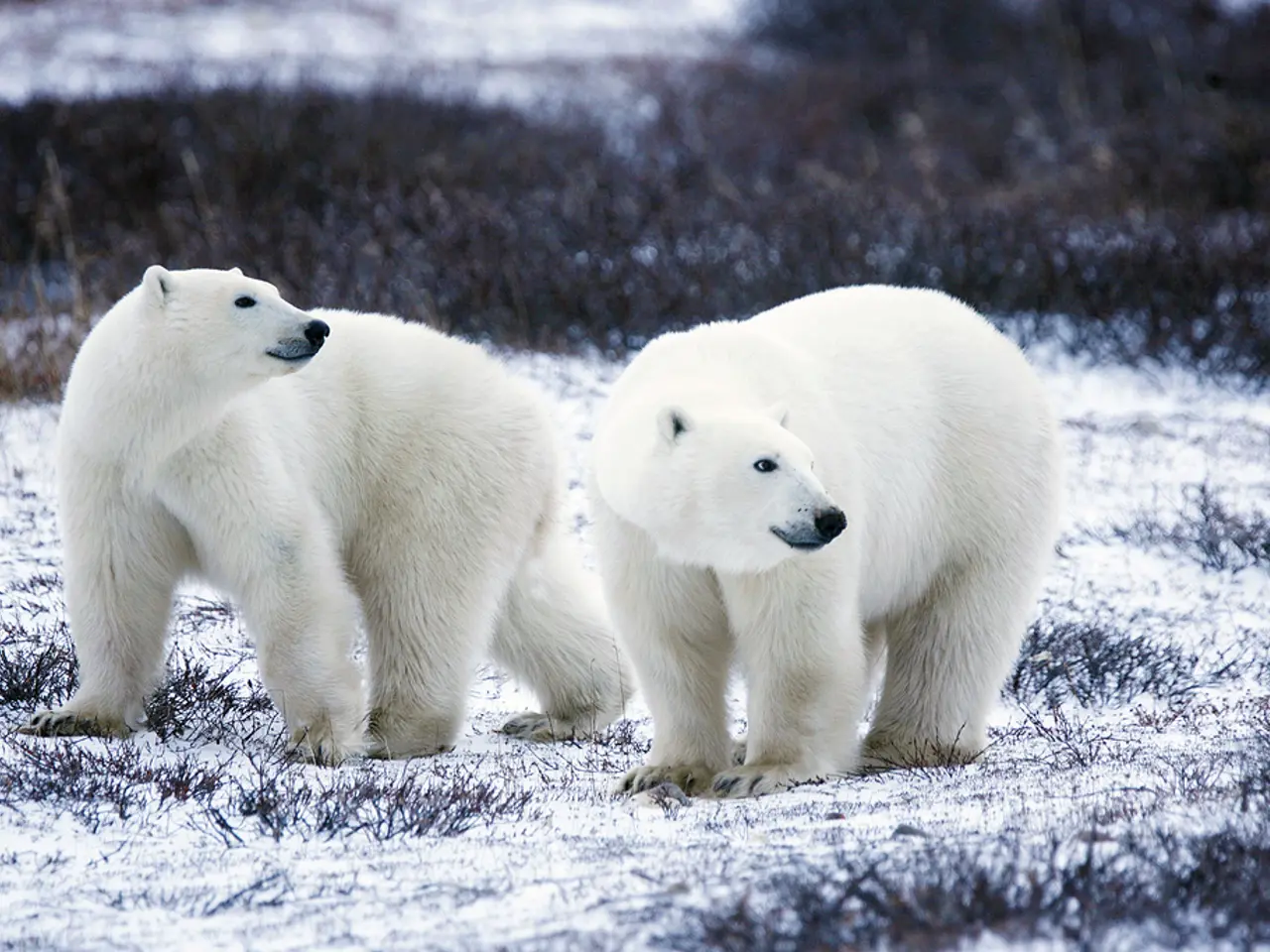Survival Strategies of Polar Bears in Cold Winter Conditions
In the icy landscapes of the Arctic, polar bears have evolved remarkable adaptations to survive the freezing temperatures. One key mechanism is the use of blubber as an insulator, a fascinating feature that was explored in a recent experiment as part of the Around the World in 50 Experiments series.
### The Blubber Experiment
The purpose of the experiment was to demonstrate how blubber acts as an insulator, protecting animals from the cold. Participants first immersed their hands in ice water without any protection and timed how long they could keep them in the water before it became uncomfortable. This represented the human experience of cold temperatures without any insulation.
Next, participants applied lard to latex gloves as a stand-in for blubber and repeated the experiment. The lard-covered hand was found to remain comfortable in the ice water for significantly longer, illustrating the insulating properties of blubber.
### Key Mechanisms for Maintaining Body Temperature
Cold-climate animals, including polar bears, penguins, and seals, maintain their body temperature through a combination of physiological and behavioural adaptations.
- **Insulation**: Blubber, a thick layer of fat beneath the skin, acts as an excellent insulator. It dramatically reduces heat loss by minimizing conduction and convection of heat through the skin. - **Peripheral vasoconstriction**: Exposure to cold triggers the constriction of blood vessels near the skin and extremities, reducing blood flow there and thus limiting heat loss from the surface of the body. - **Increased heat production**: Shivering thermogenesis involves rhythmic muscle contractions to generate heat internally. - **Other adaptations**: Thick fur or feathers, behavioural actions like huddling or seeking wind shelters, and metabolic and circulatory adaptations also play crucial roles in cold-climate survival.
### The Role of Blubber
Blubber is a specialized fatty tissue layer beneath the skin that serves as a thermal insulator by reducing the rate of heat transfer from the body's core to the cold external environment. It is particularly vital in marine mammals like seals and whales, as water conducts heat away from the body much faster than air. In polar bears, blubber complements thick fur to help them survive arctic temperatures.
### Other Cold-Climate Adaptations
- Polar bears have hollow, colorless fur that traps the sun's heat to keep them warm. - Polar bears can overheat in summer when temperatures are the highest and often roll in the snow to cool down. - Polar bears can run at speeds of 25mph on land. - Some animals hibernate and build a den or burrow to sleep for the colder months, with their body temperature dropping and heart rate slowing down to conserve energy. - Other animals migrate for winter, moving to a warmer climate where food is available.
### Fascinating Facts
- Polar bears only live at the North Pole (Arctic) and penguins at the South Pole (Antarctic). - Polar bears have an amazing sense of smell and can smell seals 1km away. - Polar bears can live to around 30 years old. - Fat also acts as a food store when food is scarce for some animals. - The children in the experiment were asked how they thought animals stay warm in cold environments, and the first answer was that animals have fur to keep them warm.
This article was last updated on July 11, 2025, by Emma Vanstone. The experiment involving lard or shortening as a stand-in for blubber provides a simple demonstration of how animals, including polar bears and penguins, stay warm in cold temperatures.
- The experiment involving lard demonstrated how insulation, such as blubber in polar bears, helps protect animals from the cold.
- Children participating in a fitness-and-exercise activity were asked to consider how animals stay warm in cold environments, with one answer being that animals have fur to keep them warm.
- In the Arctic, polar bears use a combination of insulation, peripheral vasoconstriction, increased heat production, and other adaptations to maintain their body temperature in the harsh environment.
- In addition to blubber, cold-climate animals like polar bears also have other adaptations such as hollow, colorless fur and the ability to migrate or hibernate to survive winter.




